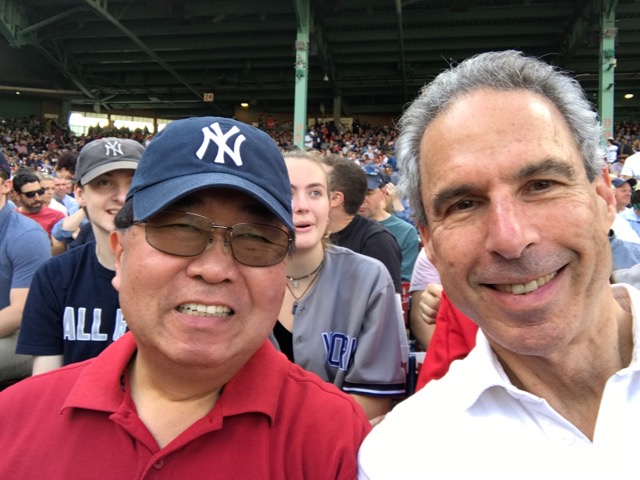If you’re a student ages 13-18 with a passion for mental well-being and building stronger relationships with your friends, family, and peers, Thrive Global wants to publish your work on Thrive on Campus! We’re joining forces on another special Essay Competition with Write the World, an interactive online global community for student writers to develop their voices, refine their editing skills, and get their work published on an international platform. Thrive’s Editorial Director, Marina Khidekel, will be the guest judge. See here for the story prompt and more details.
Modern technology, for all its connectivity, has the power to isolate one person from another. The ease of passively consuming social media lulls us into worlds without true engagement — lonely worlds of “likes” and “follows.” We inhale content but don’t activate our breath — and fail to return voices filled with our ideas to the audience. Often, the seductive nature of electronic media distracts us from the very content it carries. We’re entertained — but not engaged. Engagement creates exciting new content but requires responsive action. Today, many teenagers are victims of high-tech isolation. Fortunately, it’s not a new problem and past lessons can provide solutions. We can turn the tables on social media’s potential to isolate by active engagement — by projecting our voice to reach others.
I was a teenager in New York City in the 1960s, an age of high tech (Space Race) and high anxiety (Cold War). The transistor radio was the newfangled consumer communication platform. During this decade of alienation, my generation listened to folk tunes like Simon & Garfunkel’s “I Am a Rock (I Am an Island)” via radio signals that reached millions of teens’ ears. I did my share of listening, but disliked the passivity. Luckily, my uncle Jack, the engineer, nurtured my interest in building radios. First, I built a receiver to listen to shortwave frequencies. Then, eureka, I discovered I could build a transmitter — to broadcast out to the world. The allure of reaching strangers in distant countries hooked me. I wanted to become a ham (or amateur) radio operator. I studied radio theory and Morse code, an alphabet of audible dots and dashes, and passed a government exam to get my license to transmit. Was I a homegrown techy teenager? No. The draw was to use the medium — the transmitter — to connect with people across mountains, rivers, and oceans. The transmitter gave me voice to engage.
In today’s era of texts, tweets, and snaps, instant communication is a given, but when I grew up, connecting in real time to random strangers via technology was wholly new. I only knew how to make friends in person, at school or playing sports. But the telegraph key of my radio station opened up new worlds. Before long, I was exchanging Morse code messages with hams far and wide.
One day, I heard a strong signal — another ham, with the call sign “WB2ZTQ” — only six miles away in New York City. Through the dots and dashes of Morse code, we introduced ourselves. After a few months, we agreed to meet in person.
ZTQ was John Sau, the teenage son of Chinese immigrants. John said his father derived their last name by tossing the letters “U.S.A.” in the air. John’s family lived in an apartment over their family-run Chinese restaurant. John’s mom spoke little English, but was a great cook with a delightful laugh. She taught me to use chopsticks and savor whole steamed fish at holiday dinners. Fifty years ago, John and I attended the Woodstock music festival together. I attended John’s wedding. We each married a girl named Clare. John and I remain friends to this day. He now lives in Los Angeles and I in Boston, but we try to get together once a year.

What’s the relevance of ham radio memories and my lifelong friend? The same teenage urgency to master technology to engage with people across the world — to create and transmit, not just passively receive — inspired me to develop Write the World. Whether by telegraph keys or responses to writing prompts, we can actively master technology to connect with others — and better understand our world and ourselves. Write the World’s global writing community facilitates and enriches these human connections. You don’t need to learn Morse code or pass an exam — just look in the mirror, consider your audience, and fashion words that thoughtfully transit the distance. The vital back-and-forth that results is sure to pull you from any throes of isolation into surprising engagements with others — and, if you’re lucky, occasional lifelong friendships.
Follow us here and subscribe here for all the latest news on how you can keep Thriving.
Stay up to date or catch-up on all our podcasts with Arianna Huffington here.


